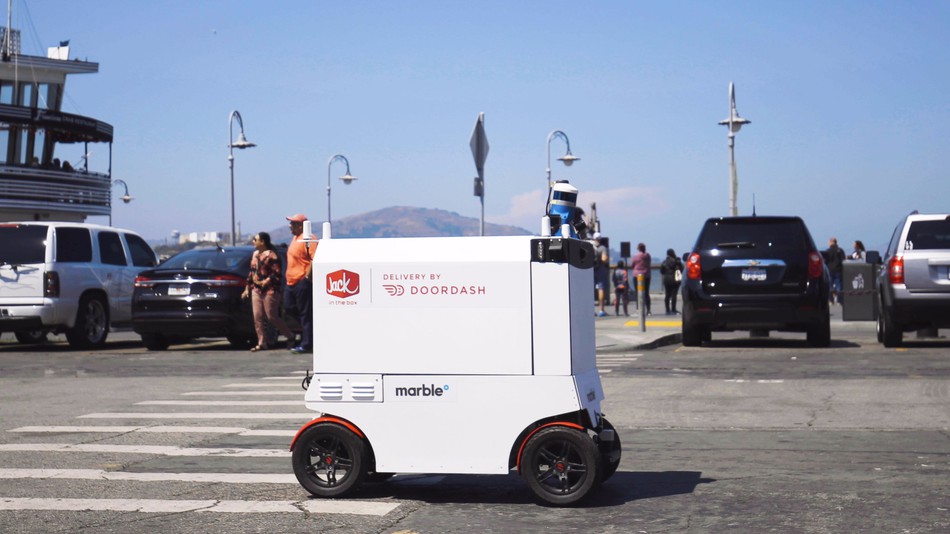Autonomous robots are no longer the stuff of tech enthusiasts’ daydreams or sci-fi movies.
DoorDash and Marble joined forces with Jack in the Box to test an innovative new service in our city streets: autonomous robot food delivery. This is a whole new level of convenience that is part of Jack in the Box’s overarching mission to jettison the quick-service restaurant industry into the future.
The robots, which are designed by Marble, are waist-high, four-wheeled machines that resemble a miniature Mars Rover. Their objective is to make delivery more efficient in urban areas, where machines can navigate the city more quickly than a car. The robot will come straight to customers’ doors, showing us all what food service could look like in the decades to come.
“Finding new opportunities to not only satisfy cravings, but also engage with our guests in a variety of new ways has always been in our DNA,” said Iwona Alter, Chief Marketing Officer for Jack in the Box. “We believe robot delivery challenges conventions of food service, and we are thrilled to team up with DoorDash and Marble on this forward looking idea.”
Using the DoorDash app or website, customers place an order for some Jack in the Box grub. At that point, DoorDash’s unique algorithm searches its platform to identify which Dasher is best positioned to complete that delivery – a person or a robot.
If the right person to do the job is, in fact, a robot, the delivery details are entered into the robot’s software. From there, it sets off on its mission to bring delight in food form to hungry San Franciscans.
The robot is equipped with a custom software that allows it to navigate autonomously, safely, and efficiently from the restaurant to its delivery destination. It even knows when to cross the street (without having to look both ways), thanks to a blend of complex autonomous vehicle software and technologies like Light Detection and Ranging (LIDAR), which is a sensing method that allows the robot to “see” where it’s going. In addition, the robot also uses a combination of cameras, ultrasonic sensors, and high-resolution 3D maps of its territory.
A human chaperone accompanies each robot, just in case it needs some help along the way. (Hey, no one is perfect.)
Once the robot arrives at its destination, the customer receives a notification and greets it at the door. Using the passcode sent to their phone, the customer can then unlock the robot’s cargo area, where their delicious food has been kept safe and warm for them.
While the robot is able to communicate with some simple sounds and beep, it’s still learning how to speak. So for now, the chaperone does most of the talking.
But the technology will continue to develop and hopefully expand into more neighborhoods (crosses fingers). As it does, companies like Jack in the Box will work with it to ensure efficient service and innovative dishes for their customers.
Source: http://on.mash.to/2uSXy2J











